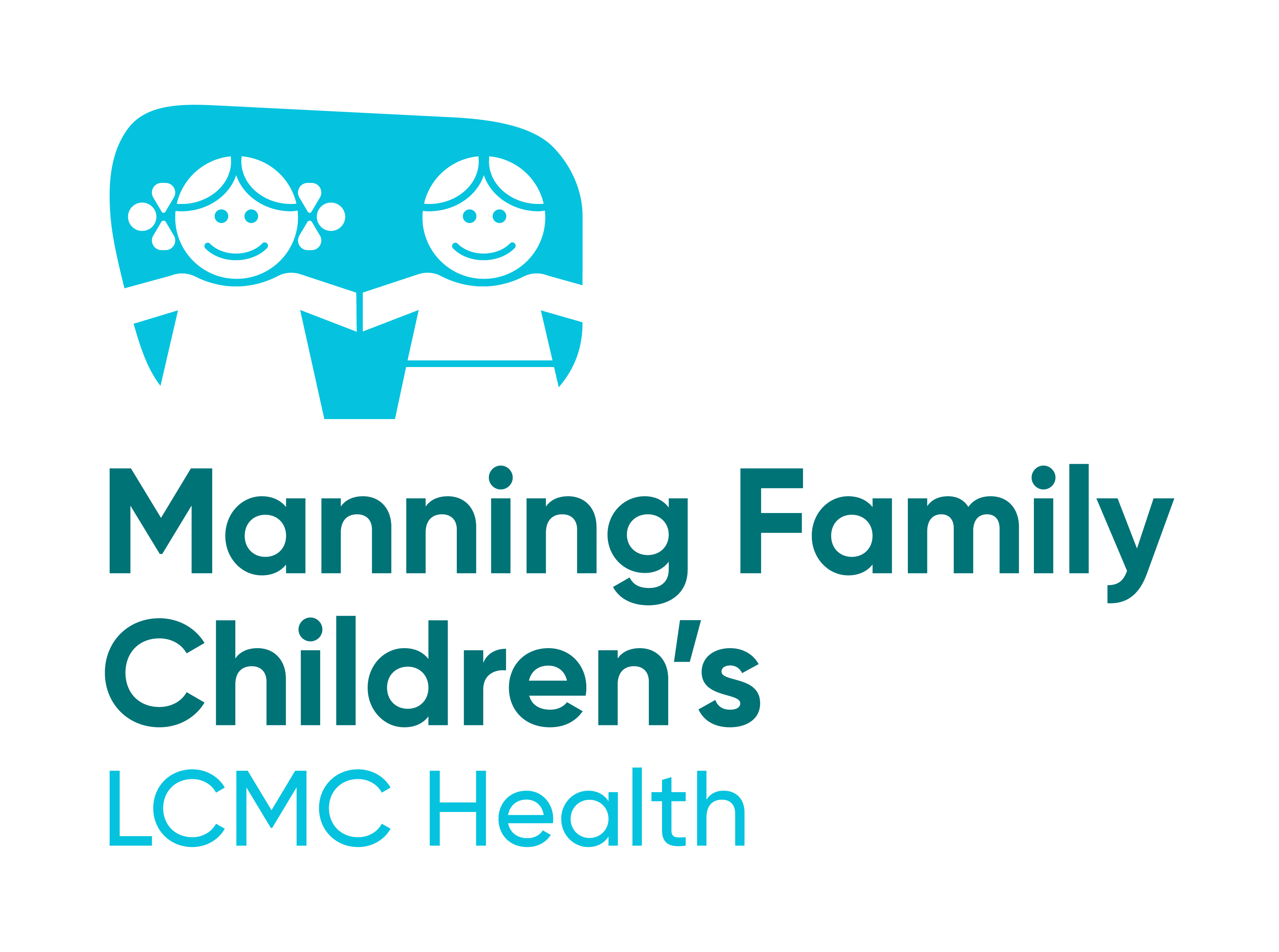Byson’s heart journey: From unexpected diagnosis to courageous heart warrior
- Category: Cardiology, Patient Stories
- Posted on:

Malaysia Sanders and her husband, Boris, were surprised but excited to learn they were expecting another baby. As a mother of three, with her youngest already five years old, Malaysia had thought their family was complete. However, in April 2022, life had other plans.
“I was shocked,” Malaysia admitted. “We weren’t planning on having more kids, but here we were, preparing to welcome another little one into our lives.”
A routine ultrasound reveals a heart condition
Everything seemed to be progressing smoothly until July 2022, when Malaysia went in for a routine 20-week ultrasound, eager to find out the gender of their baby. But during the scan, the ultrasound technician paused and appeared concerned. “They couldn’t find the baby’s heart valves,” Malaysia recalled. Unsure of what it could mean, her OB-GYN referred her to a maternal-fetal medicine specialist (MFM) in Lafayette, Louisiana, for a closer look. “It was a nerve-wracking moment,” Malaysia shared. “We didn’t know what to expect.”
Her MFM performed a detailed ultrasound and delivered unsettling news: the left side of the baby’s heart was significantly smaller than the right. Malaysia was then referred to Durga Naidu, MD, a fetal cardiologist at Children’s Heart Clinic of Louisiana in Lafayette. Her baby was diagnosed with borderline Hypoplastic Left Heart Syndrome, a condition characterized by underdevelopment of the structures on the left side of the heart. Over the following months, Dr. Naidu performed regular fetal echocardiograms to closely monitor the growth of the left heart structures and assess fetal cardiac well-being. When the timing was right, she was referred to Manning Family Children's for a comprehensive prenatal fetal cardiac evaluation, counseling and prenatal surgical consultation.
“Hearing that diagnosis was overwhelming,” Malaysia recalled. “They told us he might need three major surgeries after birth. But we just had to take it one step at a time.”
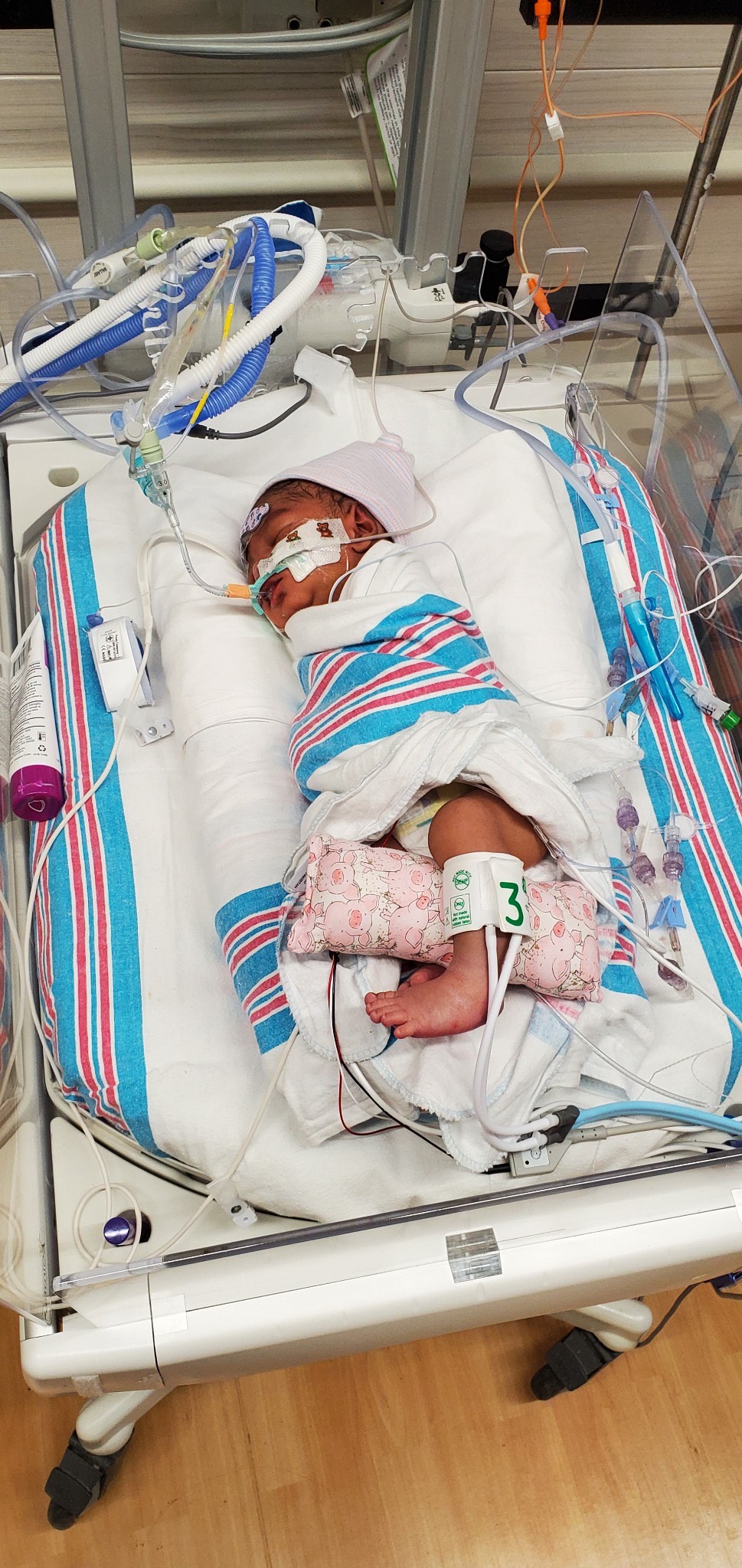 Byson’s arrival
Byson’s arrival
Malaysia and Boris did everything they could to prepare for Byson’s arrival, but nothing could fully ease their worries. The day of Byson’s birth was filled with anticipation and moments of uncertainty.
As Malaysia’s due date approached, her care team decided to induce labor at Touro Hospital in New Orleans. After a day of labor and medications to induce delivery, Byson arrived naturally on November 11, 2022, weighing 5 pounds. Despite initial fears of a C-section, Malaysia’s delivery went smoothly.
“It was scary because I thought I would have to have a C-section,” Malaysia shared. During labor, the medical team grew concerned as Byson’s heart rate fluctuated—sometimes dipping dangerously low.
Finally, after hours of careful monitoring and adjustments, Byson surprised everyone by arriving naturally. “He came so quickly, maybe in just a few minutes,” Malaysia recalled with relief. “Everyone was amazed because they had been preparing for a C-section, but he ended up coming so easily.”
Although Byson cried and appeared stable at birth, his journey was far from over. He was immediately transferred via helicopter to the Cardiac Intensive Care Unit (CICU) at Manning Family Children’s, where he was intubated and given medication to keep his patent ductus arteriosus (PDA) open.
During pregnancy, Byson had been diagnosed with borderline Hypoplastic Left Heart Syndrome (HLHS). However, after his birth, the medical team discovered that Byson’s condition wasn’t as severe as initially feared. While the left side of his heart was smaller, it wasn’t consistent with a typical HLHS diagnosis. Byson was noted to have borderline hypoplasia of the left heart which was diagnosed as Shone’s Complex syndrome (Bicuspid aortic valve, mild hypoplasia of the mitral valve, left ventricle and coarctation of the aorta). He also had Supravalvar Aortic Stenosis (SVAS) and left coronary artery fistula to left atrial appendage. Unlike traditional aortic valve stenosis, which occurs at the aortic valve, SVAS involves narrowing in the first part of the aorta, just above the valve.
Byson’s cardiology team at Children’s carefully monitored his condition, debating whether surgery was necessary. Ultimately, they determined that addressing the stenosis in his aortic arch through surgery was in Byson’s best interest, ensuring a better quality of life and improved heart function as he grew.
Three days after birth, Byson underwent heart surgery to repair the narrowing in his aortic arch.
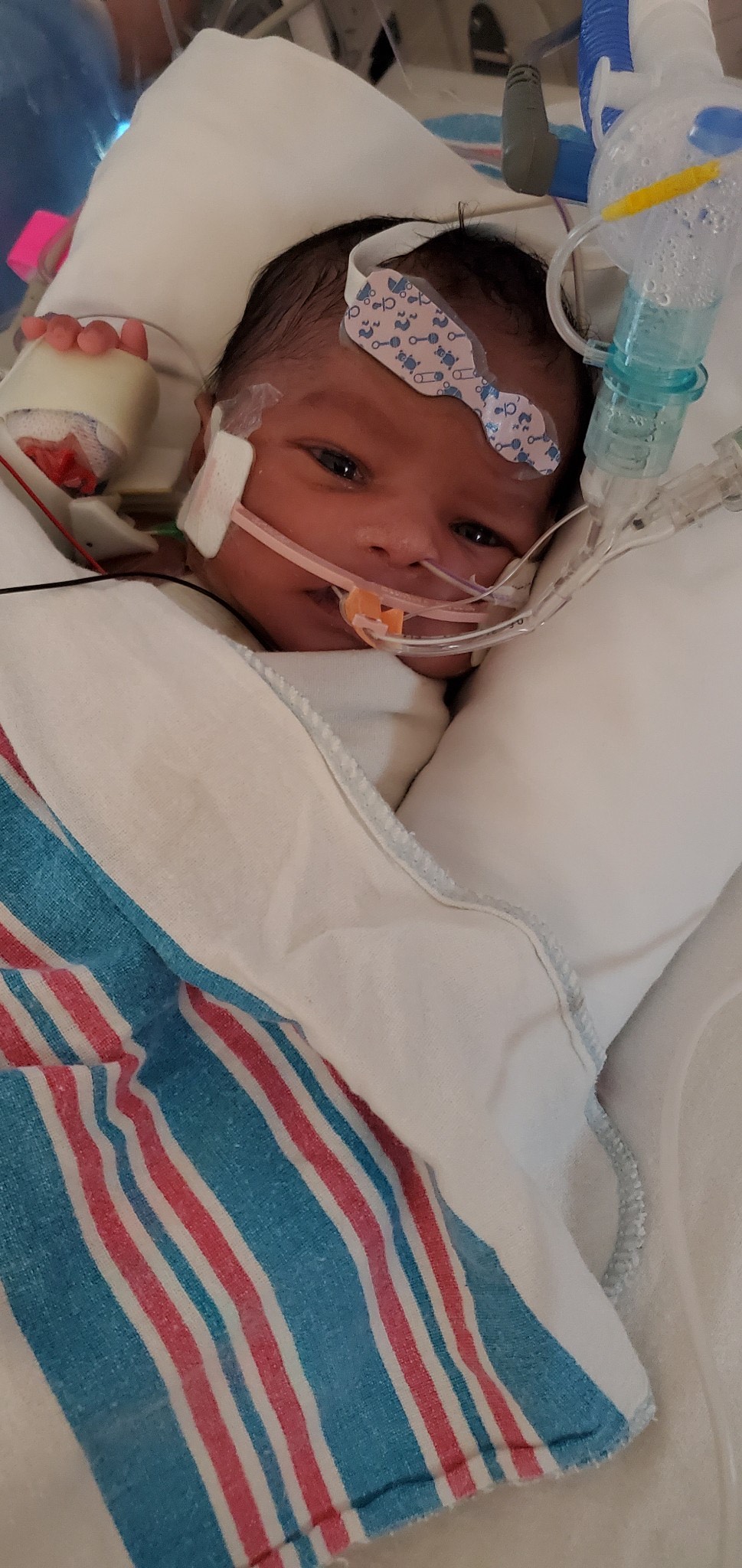 Challenges after heart surgery
Challenges after heart surgery
The period following Byson’s surgery was filled with anxiety and uncertainty for Malaysia and Boris. “I couldn’t sit still or think about anything else,” Malaysia recalled. “It was hard to even take a deep breath.” The family waited in the CICU’s family room as the cardiovascular team updated them on the heart procedure. For a brief moment, Malaysia felt relief, but the challenges were far from over.
Shortly after surgery, Byson’s body wasn’t responding well to the repair, and his pressures indicated complications. The surgical team had to reopen Byson’s incision and leave his chest open for two weeks.
“It was so hard seeing him like that,” Malaysia shared. “He was connected to so many machines, with a tube down his throat. It was overwhelming, but the medical staff was incredible. They had counselors and chaplains who supported us through everything.”
When the time came to close Byson’s chest, there was a glimmer of hope, but his recovery remained complex. The team attempted to extubate him, only for his lungs to collapse three times. “It was a wait-and-see moment each time,” Malaysia explained. “Eventually, his lungs stabilized, but it was terrifying.”
The repeated collapses were caused by mucus building up in Byson’s lungs due to the tube in his throat and his inability to cough or move. “It was just settling in his lungs,” Malaysia explained. “Naomi, his respiratory therapist, was such a blessing. She worked tirelessly to clear out the mucus, especially in his left lung, which kept collapsing. After the third collapse, we just prayed, and finally, his lung stayed up.”
With his lungs recovered and his condition steadily improving, Byson made remarkable progress.
“It wasn’t long after that when they discharged us,” Malaysia said. “He was doing so well by then. It felt like we could finally breathe again.”
After six weeks in the CICU, Byson’s condition stabilized, and Malaysia was finally able to hold him. “The first time I held him, he was one month old,” she shared. “It was an emotional moment. I had stayed with him the entire time, determined not to leave without my baby.”
Byson was discharged soon after and went home to join his family.
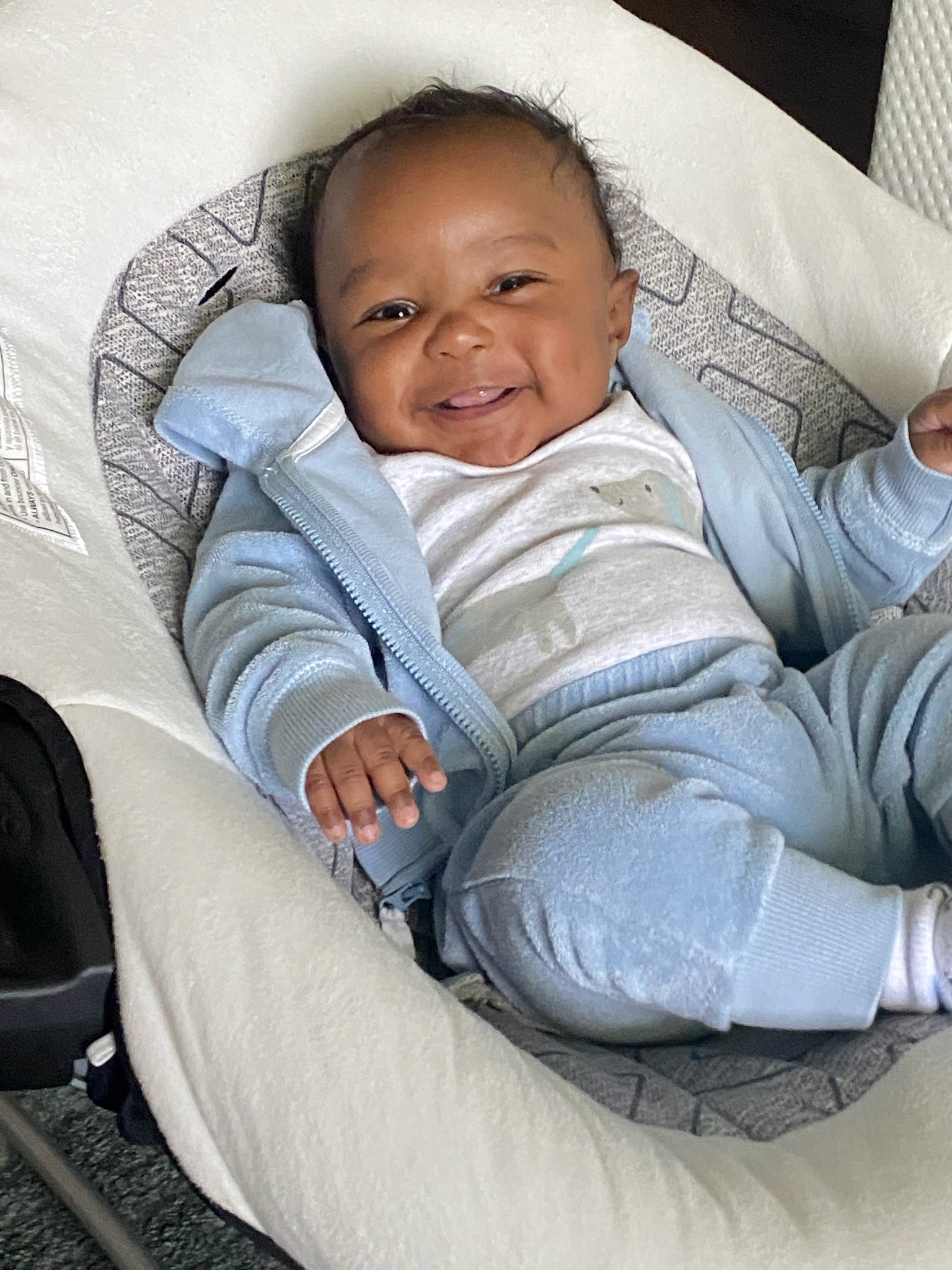 A thriving heart warrior
A thriving heart warrior
Now two years old, Byson is thriving.
“He’s a character,” Malaysia said with a smile. “He loves making people laugh and playing tricks on his siblings. He’s happy and full of life. You wouldn’t know he’s a heart patient unless you see his scars.”
Developmentally, Byson is meeting all his milestones, although he’s a bit smaller than other children his age. Byson continues to see his pediatric cardiologist, Dr. Naidu, for follow-up care every three months.
On September 18, 2024, Byson underwent another surgery to address stenosis of his aorta, near the area just before the valves, which had become pinched off and was not improving. During the procedure, the surgical team enlarged the narrowed section of his aorta, and Byson’s recovery was swift—he was discharged from the hospital in less than a week.
“Dr. Naidu has been with us since the beginning,” Malaysia said. “He’s thorough and always makes sure Byson gets what he needs. We’re so grateful for him and the entire cardiology team at Children’s.”
Malaysia offers words of encouragement to other patients and families facing similar challenges. “Stay positive and have faith,” she said. “Determination kept me going. I knew my baby was going to live, and I wasn’t leaving the hospital without him. Trust your care team and know that you are not alone.”
Today, Byson is living proof that even the smallest hearts can be resilient.
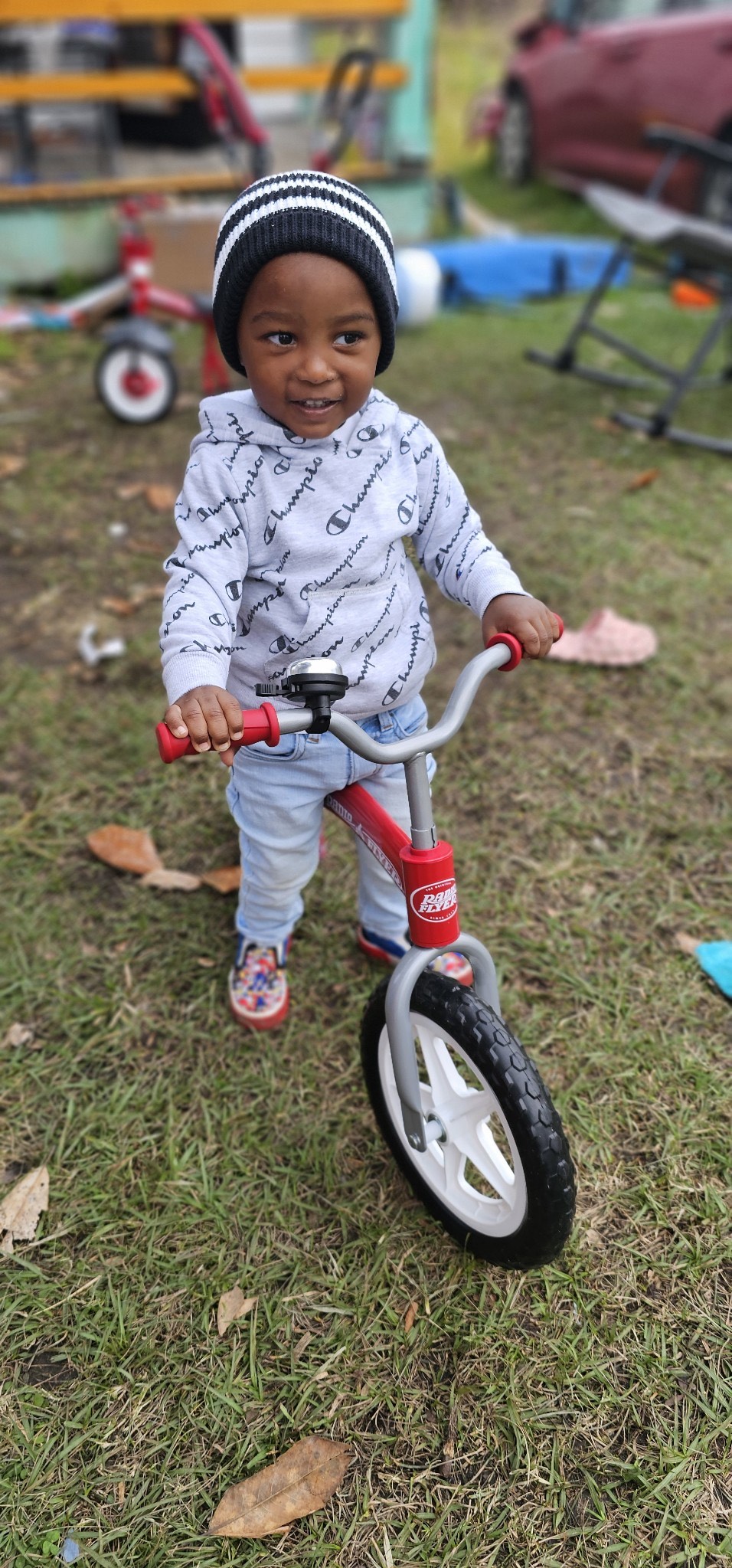 For more information about the Heart Center at Manning Family Children’s visit https://www.manningchildrens.org/services/heart-center/
For more information about the Heart Center at Manning Family Children’s visit https://www.manningchildrens.org/services/heart-center/
